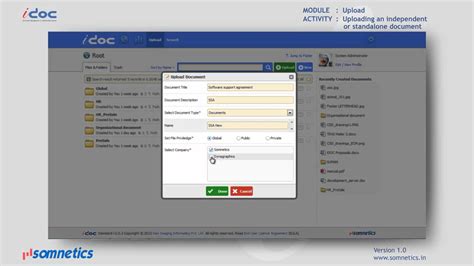As businesses leverage technology to streamline operations and enhance efficiency, the seamless exchange of documents becomes paramount. IDoc uploading facilitates this exchange, enabling organizations to send and receive business documents electronically. This comprehensive guide delves into the intricacies of IDoc uploading, empowering businesses with the knowledge and strategies to maximize its benefits.

Benefits of IDoc Uploading
IDoc uploading offers a multitude of advantages, including:
- Reduced manual effort: Automates the document exchange process, eliminating the need for manual data entry and physical document handling.
- Improved data accuracy: Automated data transmission minimizes errors associated with manual input, ensuring the integrity of business transactions.
- Enhanced speed and efficiency: Electronic document exchange eliminates the time-consuming and labor-intensive processes involved in traditional methods.
- Cost savings: Reduces expenses associated with printing, mailing, and physical storage of documents.
- Environmental sustainability: Promotes paperless operations, contributing to environmental conservation.
How IDoc Uploading Works
IDocs (Intermediate Documents) are standard electronic messages used in SAP systems for data exchange. IDoc uploading involves converting documents into IDoc format and transmitting them to the recipient’s SAP system.
The process typically involves the following steps:
- Creation of an IDoc message from the source document.
- Mapping of source document fields to IDoc fields.
- Transmission of the IDoc message via a communication channel.
- Reception and processing of the IDoc message in the recipient’s system.
Considerations for Successful IDoc Uploading
To ensure successful IDoc uploading, it is essential to:
- Define clear data mapping rules: Establish precise mappings between source document fields and IDoc fields to prevent errors.
- Use appropriate communication channels: Select reliable and secure communication channels, such as File Transfer Protocol (FTP) or electronic Data Interchange (EDI).
- Implement error handling mechanisms: Define strategies to handle transmission errors and ensure data integrity.
- Monitor and troubleshoot: Regularly review IDoc logs and implement measures to address any issues encountered.
Applications of IDoc Uploading
The versatility of IDoc uploading makes it applicable across various business processes, including:
- Purchase orders: Automating purchase orders streamlines the procurement process, reducing turnaround time and improving supplier relationships.
- Invoices: Electronic invoicing simplifies the process of sending and receiving invoices, reducing delays and improving cash flow.
- Goods receipts: Electronic goods receipts provide real-time inventory updates, improving warehouse management and customer satisfaction.
- Shipping notifications: IDoc uploading enables seamless sharing of shipping information, enhancing logistics efficiency and customer visibility.
- Inventory management: Electronic inventory data exchange facilitates automated updates, ensuring accurate inventory levels and timely replenishment.
Strategies for Effective IDoc Uploading
To maximize the benefits of IDoc uploading, consider these strategies:
- Leverage cloud-based solutions: Utilize cloud platforms to streamline IDoc processing, reduce infrastructure costs, and improve scalability.
- Implement EDI (Electronic Data Interchange): EDI provides a standardized framework for electronic document exchange, enhancing security and compatibility.
- Partner with managed services providers: Engage with specialized service providers to manage IDoc uploading operations, ensuring seamless integration and ongoing support.
- Monitor and measure performance: Regularly track key metrics, such as data accuracy, transmission time, and error rates, to identify areas for improvement.
Customer Testimonials
“IDoc uploading has revolutionized our invoice processing. It has significantly reduced manual effort, improved data accuracy, and expedited payments from our customers.” – Finance Manager, Fortune 500 Manufacturing Company
“The integration of IDoc uploading into our logistics system has transformed our operations. We now have real-time visibility of goods movements, enabling us to respond quickly to changes and improve customer service.” – Logistics Manager, Large-scale Retail Organization
Frequently Asked Questions
- What is the difference between IDoc and EDI? IDoc is a SAP-specific data exchange format, while EDI is a standardized format used for electronic document exchange across different platforms.
- What are the security considerations for IDoc uploading? Ensure secure communication channels, implement data encryption, and establish role-based access controls to protect sensitive information.
- How can I troubleshoot IDoc uploading errors? Review IDoc logs, check network connectivity, and consult with technical support if necessary.
Conclusion
IDoc uploading is a powerful tool that empowers businesses to streamline document exchange, improve data accuracy, enhance efficiency, and reduce costs. By embracing the principles and strategies outlined in this guide, organizations can harness the transformative potential of IDoc uploading and reap its numerous benefits.
